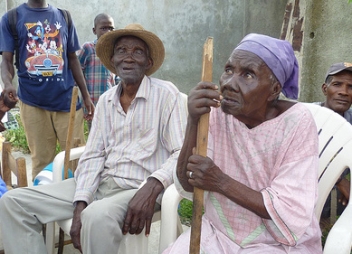 “But are there any old people in Haiti? Isn’t life expectancy something like 54?”
“But are there any old people in Haiti? Isn’t life expectancy something like 54?”
I’ve been asked this question twice in the last few weeks.
It’s hardly a scientifically accurate sample, but I wonder if it’s representative of people’s understanding of “life expectancy”?
Do people see HelpAge signs and wonder: “Why are they here, are there that many older people?”
“The myth of life expectancy”
Mark Gorman, of HelpAge describes this as “the myth of life expectancy”:
“Life expectancy is only an average across a whole population, not a maximum for each individual. Life expectancy at birth is hugely affected by deaths of babies and young children up to 5 years. Therefore, if we calculate life expectancy at 5 or 15 years of age, it rises dramatically.
“This is the case despite the impact of HIV and AIDS and other global killers, such as malaria. Likewise, major disasters and conflicts have not significantly altered the momentum of population ageing. The 20th century saw more deaths from wars than all of previous human history, but it saw the period of most rapid population ageing.”
“The oldest old”
We estimate that there are at least 200,000 older people in Haiti affected by the earthquake. Many are living in camps among the rest of the displaced population. Maybe they’re not as visible as the rest of the general population, but they are there.
In the last week I’ve met several older people, who are, according to demographers, the “oldest old” – people in their 90s and beyond. At the Asile Ville de Jesu we were introduced to a woman who was 105. We met a brother and sister, Mercius and Jeanne (above), at a distribution recently who were 101 and 103.
We need to urgently dispel the myth of life expectancy, especially if it affects the ability of older people to access humanitarian assistance.
Read more about HelpAge’s work in Haiti.
